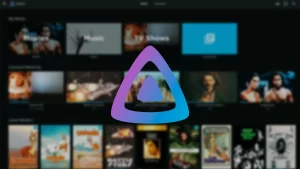If you have an eCommerce website – or plan to have one – SEO is imperative to your online success. Implementing the right eCommerce SEO strategy can ensure your products not only rank and can be found by potential customers but also outrank your competition. If you’re new to the world of search engine optimization, there are some basics you’ll need to know to ensure your eCommerce website is properly optimized.
What is eCommerce SEO?
Search Engine Optimization (SEO), is the practice of creating web pages, product descriptions, and content that helps your website appear more often when people type relevant keywords into Google.
eCommerce SEO is just that idea applied to your online store. For example, if someone types “women’s t-shirts” into Google and you have an excellent eCommerce SEO strategy, you might be one of the first results on the page.
Why Is SEO Important for eCommerce Websites?
About 30% of all web traffic comes from search engines like Google. But the vast majority of people only click on first-page results.
A recent study found that only 0.78% of searchers click on any page-two search results. Comparatively, 75.1% of searchers click on results within the top three positions on the first page.
That means the odds of getting someone to your online store shift dramatically based on whether your eCommerce store is in the top three on Google or the second page – and why SEO is crucial for eCommerce websites.
Creating an eCommerce SEO Strategy
As you consider how to improve your eCommerce SEO, the first step is coming up with the right strategy. Here are some eCommerce SEO tips to consider:
Keyword Research
Your first goal is to figure out which keywords you want to rank for in Google search results. You can use many online tools, such as SEMrush, Ahrefs, Google Keyword Planner, and Moz, to help develop your keyword list and strategy.
Keep the relative competition for different keywords in mind as you do your research. The more competition there is for a keyword, the harder it will be to rank highly for it. You may struggle to rank well for “sweatshirts,” but you could do very well for “wool sweatshirts in New York.” Long-tail keywords can work wonders to help ensure you’re ranking well for the terms your target audience will be using to find your products.
You’ll also want to consider what your competitors are ranking for and which terms may be more transactional versus knowledge-based. If you’re looking to attract an audience with content that solves a common problem they face, you may want to draw them to content with more knowledge-based keywords, which will bring them into the sales funnel. If you’re attempting to attract customers who already know what they want and are ready to decide, you’ll want to consider more transactional keywords for those pages.
Remember that your content and SEO strategy will work together to get your ranking and conversion. So you won’t want to do one without the other.
On-Page SEO for eCommerce
On-page SEO refers to optimizing your website pages for SEO search results. You can do this through strategies like optimizing your headlines, HTML tags, and images. These items may not seem like a big deal, but they are crucial to your success.
On-page SEO items to optimize:
Page titles
Meta descriptions
Image alt text
H1’s and heading structures
Internal and external linking
URL
Keywords within content
Schema markup
It’s also essential to make sure that it’s easy for customers to find what they want and navigate to it quickly with SEO for eCommerce product pages. Otherwise, your bounce rate could be high, and you could miss out on the value behind much of your traffic.
Technical SEO for eCommerce
Google uses search engine indexing bots to read your website and determine where to place it in search results. Technical SEO refers to the process of optimizing your site so that these bots view it in a favorable light.
The most important aspects of optimizing for technical SEO include:
Website speed
Mobile-friendly
Providing directions with a “Robots.txt” file
Not publishing duplicate content
Maintaining structured data
Having an XML sitemap
Friendly website structure
Crawlable
Indexable
Use HTTPS
As with other aspects of SEO, technical SEO is not a set-it-and-forget-it strategy. You will want to review regularly to determine if there are any new errors or possibilities for optimization. If you’re testing and adjusting the SEO on your website, there are chances issues will arise that will require immediate attention.
Make it a point to schedule crawls of your website to address any significant errors and ensure you’re not losing favor with search engines. They love healthy websites, so if your website has errors, you may not rank as well as you’d prefer.
Off-Page SEO for eCommerce
Off-page SEO is anything that happens off your website and improves your SEO results. Third-party linking, or link building, is the primary type of off-page SEO.
Link building is when another website links to a page on your website. If these websites have a reasonable domain authority and link to your site, Google views that as a vote of confidence for your content. It makes your website appear more trustworthy and relevant, which helps it perform better in SEO results.
That means a good off-page SEO plan will involve developing targeted strategies for winning more links on other websites.
While links can be created organically, there are specific strategies you’ll want to consider if you are pursuing Off-page SEO.
Competitors links
Guest blog posts
Unmentioned links
Broken links/lost links
Connect to companies linking to lower-quality content
You’ll also want to monitor any toxic links to your site. If there is an indication that an abnormal amount of toxic or spam websites are linking to your website, it can have a reverse effect on Google, and they may penalize your website.
Content for eCommerce
As stated before, your content and SEO will work together to outrank your competition. Whether you’re optimizing your product pages or blog posts, you’ll want to ensure writing content that is optimized and can assist with the page’s goal.
When developing your content strategy, you’ll want to consider the stages of the buyer’s journey and develop your topics and/or landing pages. You’ll want to work with your SEO team to ensure the content is outlined with the needs for SEO before development.
Once your content is developed, you’ll also want your SEO team to review it to ensure any final touches or updates are made for optimization.
eCommerce SEO Checklist and Best Practices
Okay, let’s take a minute to review what we’ve just covered. If you want to get started with the eCommerce SEO best practices today, here’s a checklist you could follow to do so:
Perform keyword research to determine what your audience is searching for so you can outrank the competition.
Optimize your website pages for SEO using proper headlines, title tags, and images.
Boost your technical SEO score by optimizing your website’s performance and readability.
Improve your off-page SEO by getting other websites to link to yours.
Create purpose-driven content to help raise ranks and create conversions.
Completing these eCommerce SEO tips will help you get one step closer to achieving your overall SEO goals.
Best eCommerce SEO Tools
There are several excellent eCommerce SEO tools out there, such as:
Google Analytics
Google Tag Assistant
SEMrush
Ahrefs
Moz Pro Keyword Explorer
SEO Site Checkup
There are all designed to help you excel with SEO in different ways. For example, SEO Site Checkup will help you make sure your web pages are doing well in SEO. But Moz Pro Keyword Explorer will help you discover the right keywords to build content around.
Getting Started
Now that you’re more familiar with the importance of SEO for eCommerce and what’s needed for a successful strategy, it’s time to put it into practice. If you’ve not invested in any SEO tools, make a point to do so. You’ll want to carve out time to do your research and perform an eCommerce SEO audit before implementing your search engine optimization.
Keep in mind that SEO takes time. While we all want results yesterday, you’ll need to understand that search engines need to recognize and learn what your website is doing. It’s also important to realize that things change, and what may have worked once may not in the future. That’s why reviewing and updating your SEO as time goes by is essential.
Proper eCommerce SEO takes time, resources, and some know-how. If you’re struggling to get started or rank, partnering with an agency for eCommerce SEO services may be your best option.
At Data Fidelity, we’re an eCommerce SEO agency with years of experience building and optimizing eCommerce websites. Our team will work with you to determine your goals, develop a winning strategy, and implement the SEO needed to get you ranking and generate more sales.
Get in touch with us today to schedule a consultation and discover how we can help you grow your business with our eCommerce SEO services.
The post A Beginner’s Guide to eCommerce SEO appeared first on Data Fidelity Software.





